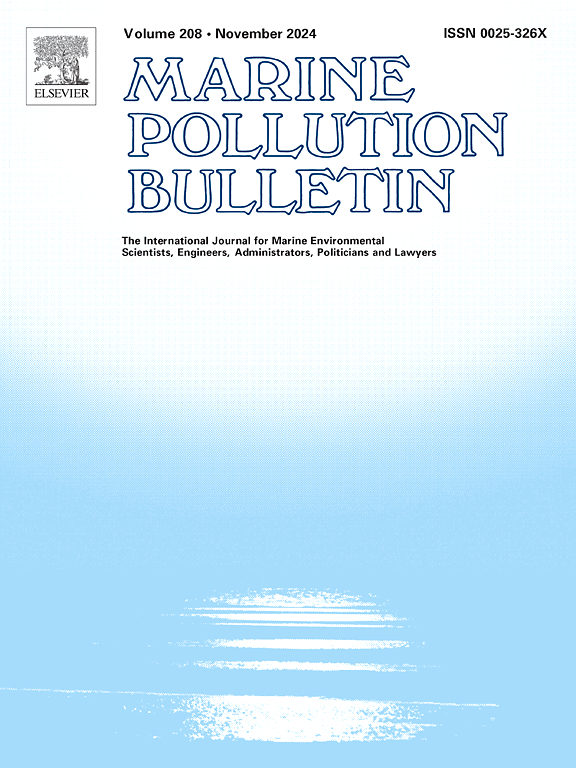"墨西哥鲨鱼消费者接触汞、硒和镉的风险评估"
IF 5.3
3区 环境科学与生态学
Q1 ENVIRONMENTAL SCIENCES
引用次数: 0
摘要
对代表墨西哥南下加利福尼亚州西海岸重要渔业资源的鲨鱼(Mustelus henlei、M. californicus、Sphyna zygaena 和 Isurus oxyrinchus)体内的汞、镉和硒含量进行了量化。根据暂定每周可容忍摄入量 (PTWI),对关键人群(包括幼儿、孕妇/哺乳期妇女和成年人)进行了符合墨西哥膳食标准和人类健康风险的抽样估算。估计每周摄入量不超过 1.52 千克加州鲭、1.35 千克鲤鱼、0.5 千克鳕鱼和 2.42 千克鲭鱼。同样,危害商(HQ)<1 和危害指数(THI)<1 也在安全范围内;因此,短期或长期内不会对健康造成慢性非致癌危害。致癌风险主要是儿童的担忧,最合适的方法是儿童每周食用不超过 0.5 公斤的鲨鱼肉。本文章由计算机程序翻译,如有差异,请以英文原文为准。
“Risk assessment for shark consumers exposed to mercury, selenium and cadmium in Mexico”
Mercury, cadmium, and selenium contents were quantified in sharks Mustelus henlei, M. californicus, Sphyna zygaena, and Isurus oxyrinchus, which represent important fishery resources in the western coast of Baja California Sur, Mexico. Sample compliance estimations with Mexican dietary standards and human health risks, according to provisional tolerable weekly intake (PTWI), were provided for critical population sectors, including young children, pregnant/nursing women, and adults. The estimated weekly intake was limited to 1.52 kg of M. californicus, 1.35 kg of S. zygaena, 0.5 kg of I. oxyrinchus, and 2.42 kg of M. henlei. Likewise, the Hazard Quotient (HQ) <1 and Hazard Index (THI) <1 were within safe limits; therefore, there will be no chronic noncarcinogenic health hazards in the short or long term. Carcinogenic risk is a concern mainly for children, and the most appropriate approach is for children to consume no >0.5 kg of shark meat per week.
求助全文
通过发布文献求助,成功后即可免费获取论文全文。
去求助
来源期刊

Marine pollution bulletin
环境科学-海洋与淡水生物学
CiteScore
10.20
自引率
15.50%
发文量
1077
审稿时长
68 days
期刊介绍:
Marine Pollution Bulletin is concerned with the rational use of maritime and marine resources in estuaries, the seas and oceans, as well as with documenting marine pollution and introducing new forms of measurement and analysis. A wide range of topics are discussed as news, comment, reviews and research reports, not only on effluent disposal and pollution control, but also on the management, economic aspects and protection of the marine environment in general.
 求助内容:
求助内容: 应助结果提醒方式:
应助结果提醒方式:


